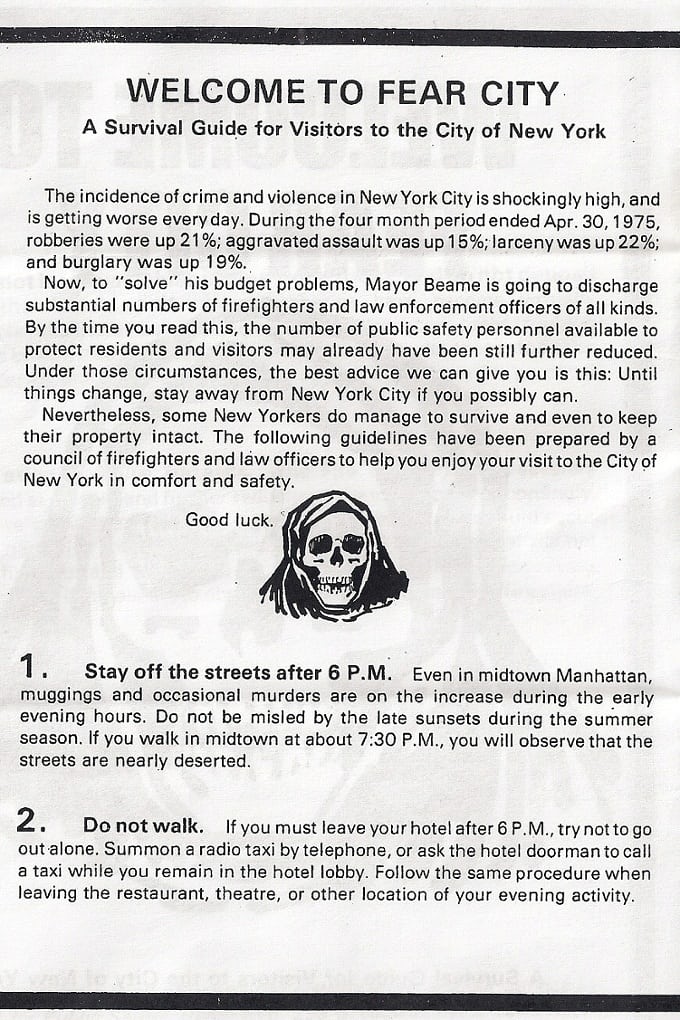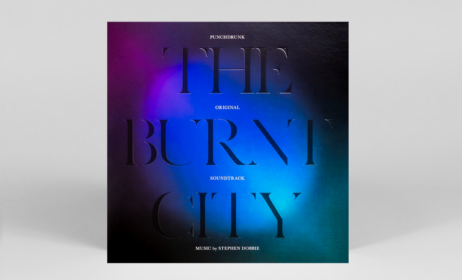Published on
July 6, 2018
Category
Features
Digging into the urban unrest behind the artwork for Warmduscher’s new album Whale City.
Released on The Leaf Label earlier this year, Warmduscher have created not so much a new album as a parallel environment, the soundtrack to the “mindset” of Whale City, a dissolute place inspired by the urban decay and subsequent gentrification of inner-city New York.
To do so you need to go back to that summer of 1975, to find a city in the middle of a fiscal crisis, balancing on the edge of bankruptcy. Day-to-day operations fell into disorder and the city’s crime rate rose steadily.
Residents were understandably paranoid, caught between the civic in-fighting and social unrest that has subsequently drifted into NYC lore. As a result, the tourist board saw a decline in visitors, a situation exacerbated to some extent by the appearance of pamphlets given out by the city’s police force. Although they featured nine rules to follow, the execution (and name) of the Fear City pamphlet, didn’t offer much in the way of useful advice. The introduction of the pamphlet ends with just two words “Good luck.”
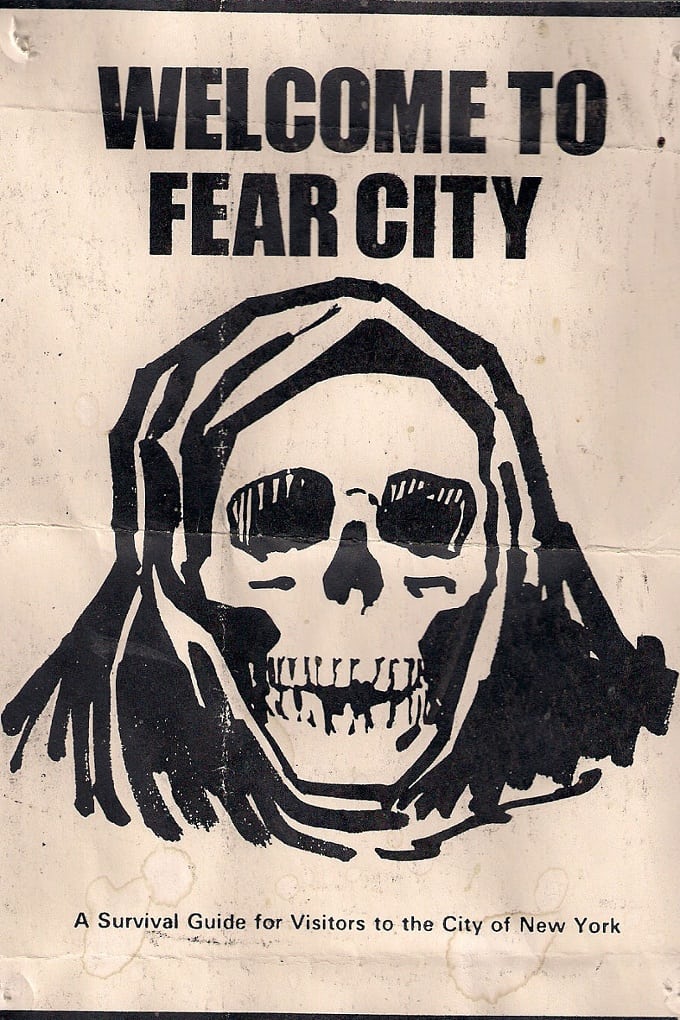
It’s a piece of the city’s history that struck Warmduscher’s frontman Clams Baker Jr, who references it in the title of the band’s latest record, Whale City, and inspired the record sleeve, which visualises the landscape of New York, socially and politically, through layers of photography and illustration.
“I can’t actually remember where I first saw it, or who told me about it,” Clams explains, “but it blew my mind straight away… I loved the skull [the death mask feature which sits on the publications cover] so much that I had it tattooed on my arm before we made the artwork.”
In addition to the visual aesthetics of the guide, the safety rules reminded Clams of films from his childhood like Fort Apache, The Bronx and “those ridiculous scenes in grimy ’70s New York movies.”
“The idea that the police would make these pamphlets to scare tourists and effectively say, “we are warning you not to come here because we can’t help you,” makes me so sad to have not been on those streets at that time,” he explains.
Clams began creating the artwork for Whale City by lifting the skull drawing from the cover of Fear City, allowing the record to fit neatly, in a visual sense, beside the band’s 2015 debut, Khaki Tears, which also features an illustrated overlay. What was going to sit behind it however took more testing. After various cover backgrounds were rejected, Clams went scavenging for images online.
“I found Brian Rose’s photo documentation of the gentrification of New York beautiful,” he describes. “I wish I could have been around The Bowery and Times Square in the ’70s, but maybe the idea is better than the reality anyhow. Either way, his pictures capture what I would have imagined and I’m so lucky he agreed to let us use it.”
Discovering Brian’s work was the first of many coincidences between Clams and the photographer. The photograph used on the album sleeve is a snippet from a large collection of Brian’s work capturing changing neighbourhoods, which documented an area Clams used to live in. That wasn’t all.
“I arrived in New York on the day of the blackout in 1977,” says Brian. Moving to the city to study at Cooper Union, he “came by train early in the morning and found an apartment by noon. It was $50 a month. A tiny walk-up tenement on the Lower East Side… That evening the power went out and I was stuck in Penn Station, safe where I was. But in poor neighbourhoods around the city, looting broke out and fire raged until morning.”
But life went on, as it always does in times of crisis. The photographer notes one particular evening when the Yankees won the baseball World Series: “During one of the games broadcast on national TV, an abandoned building caught fire just outside the stadium located in the South Bronx. For many, watching on TV, that moment symbolised the fall of New York. It was not, however, the full story of what was happening in New York. It was also a time of tremendous creativity for art and music… In 1980 I photographed the Lower East Side with a view camera documenting the scarred but still vibrant cityscape.”
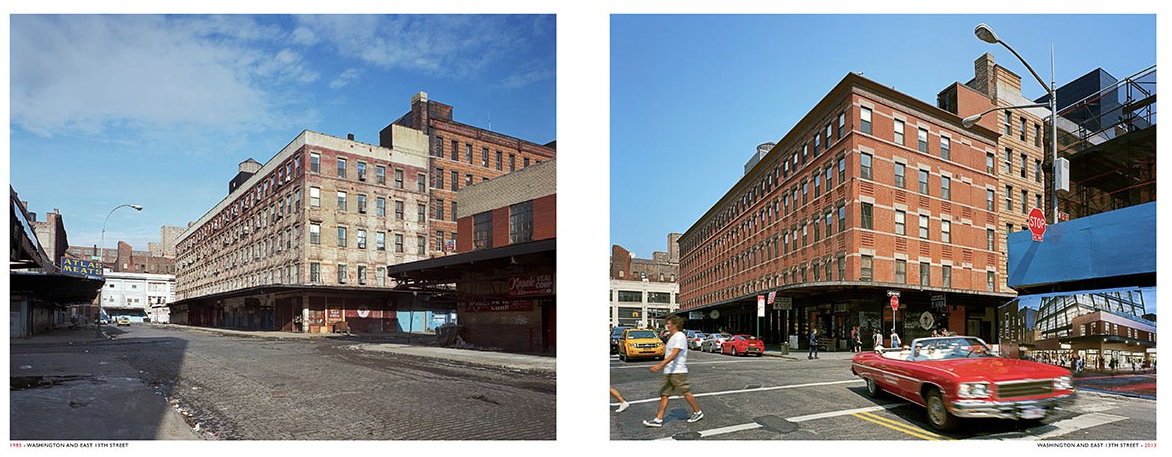
The picture featured on Whale City’s sleeve was taken during this period, and focussed on a part of the block where Brian lived. “It’s on the corner of The Bowery and East 4th Street,” he explains. “It was the skid row of New York in those days, and continued to be up into the 2000s. It was the end of the road for a lot of people, mostly alcoholics, who hung out in the bars and slept in the flophouses.”
As Brian’s work has gained praise for capturing neighbourhoods at the turning point of gentrification, this photograph in particular freezes the area in time, as the surrounding neighbourhood changed. “At some point drugs moved in, and a new kind of desperation, incompatible with the old Bowery, took over the scene. Eventually, this part of The Bowery was completely cleaned up,” says Brian. “There is an apartment building for the elderly there now.”
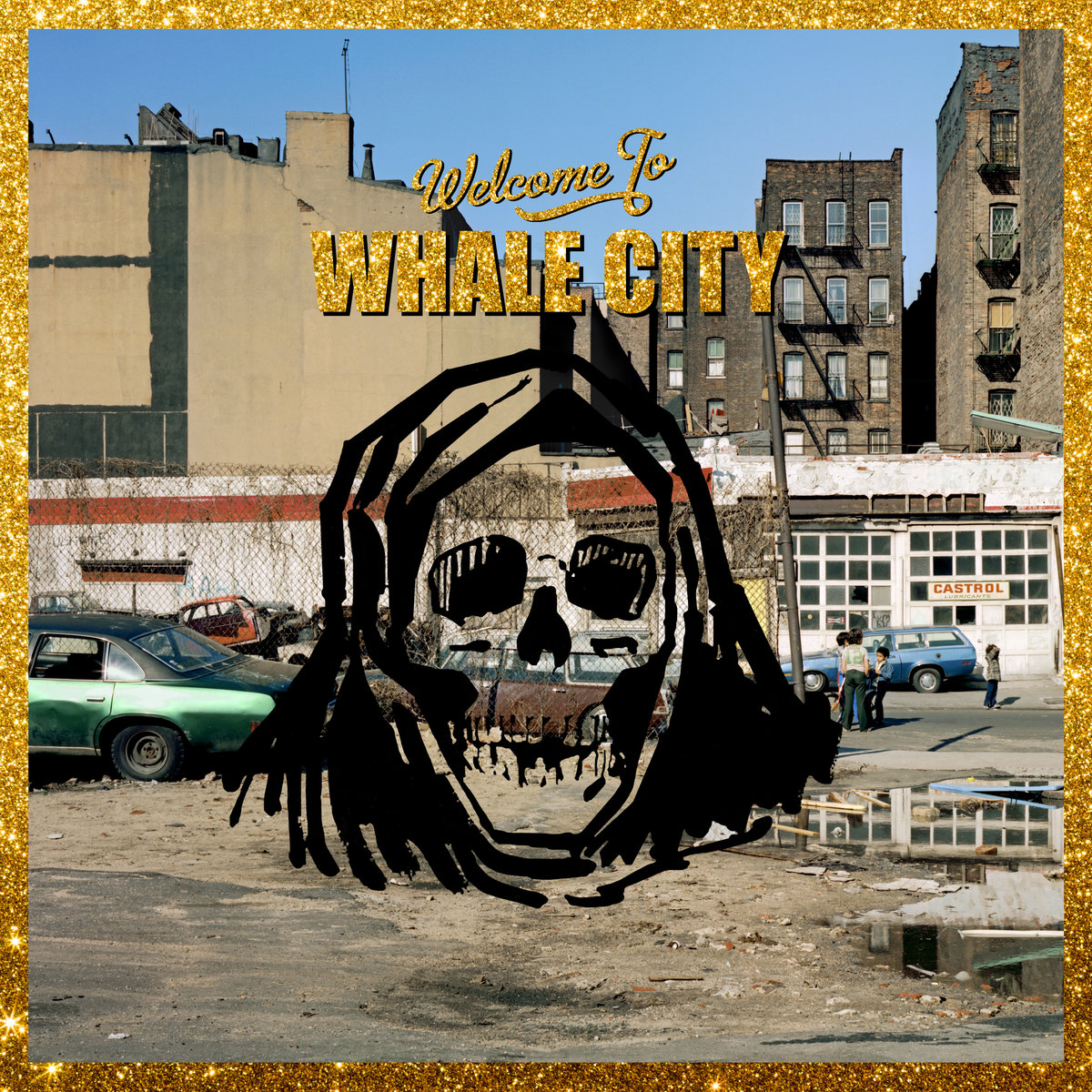
By using Brian’s photograph, Warmduscher have created their own landscape, with its own history, on the cover of Whale City. Unlike the frightening streets of New York in the ’70s, the band’s version is more of “a mindset, a place, or a time in your life,” Clams describes. “The Fear City pamphlet fits perfectly because it’s just more of a statement that you’re on your own and that nobody is there to help you get through it. The social landscape of Whale City could be anything the listener could imagine. A run down hotel in a lost city, or a cabin in the woods.”
The rest of Warmduscher’s sleeve features a series of collaborative components. Tony [Morley] from The Leaf Label was entrusted with juxtaposing a high resolution golden outline with the derelict scenes on the edge of the photograph. Old friend David Ruddeforth is also involved, in part for what Clams calls his “way of capturing social commentary unlike anyone else I know. His talent is unbelievable.” Finally, what Clams calls “the icing on the cake”, was a contribution from artist Phillip Kremer, who takes care of the artist portraits on the back cover. “I can’t believe how lucky we were for him to say yes. He’s a real artist and wonderful person.”
As Clams has mimicked Fear City in the title and sleeve of Warmduscher’s record, it’s only right that the social landscape the band have created comes with its own guidelines too. Just as the Fear City pamphlets had nine instructions of how to try to survive on New York’s menacing streets, Clams details the nine guidelines of Warmduscher’s Whale City. From the way its residents should dress to the attitude they should have, Clams’ guidelines are the ideal accompaniment to Whale City’s sound and sleeve:
1. Teeth, hair and shoes must always be on point
2. Straight razors or switchblades at all times
3. The night time is the right time
4. If it feels right follow it, if it ends wrong embrace it
5. Forget about time because there ain’t much left
6. Leave your past where you left it and forget about the future, the dream is now
7. No saying sorry
8. No turning back
9. Make them know your name

